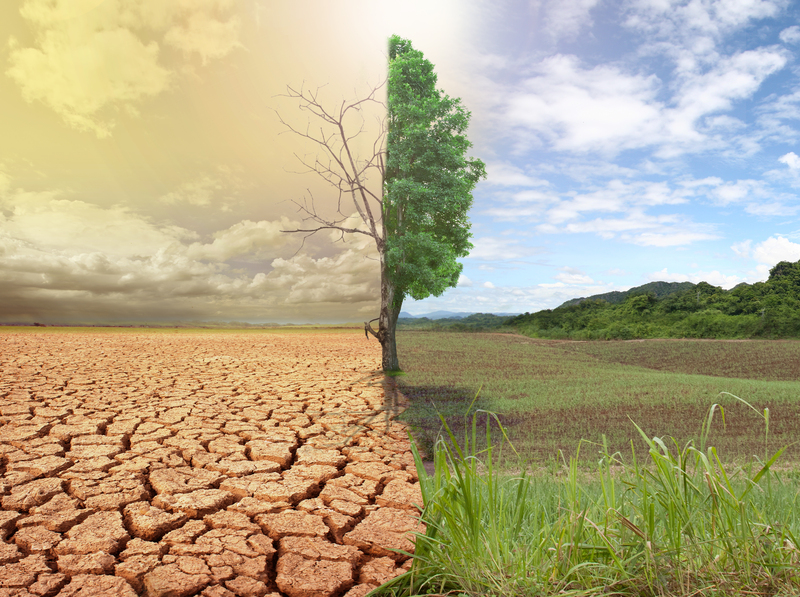The Dangers Hidden in Hazardous Waste: An In-depth Overview
Hazardous waste is among the most pressing environmental and public health concerns of the modern era. Mountains of toxic byproducts from manufacturing, chemical usage, industrial processes, and even everyday households continue to accumulate, often out of sight and, tragically, out of mind. But the dangers hidden in hazardous waste are very real--they can affect the environment, human health, and economic stability for generations. In this comprehensive article, we'll unveil the risks, consequences, and crucial facts about this invisible threat while exploring pathways for safer handling and prevention.

What is Hazardous Waste?
Hazardous waste refers to any material that poses significant or potential threats to public health or the environment due to its quantity, concentration, or physical, chemical, or infectious characteristics. These materials may be:
- Toxic (ex. heavy metals and pesticides)
- Corrosive (ex. acids and bases)
- Ignitable (ex. solvents and fuels)
- Reactive (ex. explosives, peroxides)
- Infectious (ex. medical and biological waste)
Hazardous waste can be produced by a wide variety of industries, as well as from households (via batteries, paints, cleaning products, electronics, and more). The improper management or disposal of these materials reveals dangers that may not be immediately visible, but whose impact can be far-reaching and severe.
The Hidden Hazards: How Hazardous Waste Harms Us
1. Environmental Degradation
Hazardous waste dangers are largely environmental. Improper disposal can lead to pollution of soil, water, and air:
- Soil Contamination: Hazardous chemicals can seep into the ground, stunting plant growth and entering the food chain.
- Water Pollution: Runoff or leaks from landfills can contaminate groundwater and surface water sources--affecting wildlife, agricultural irrigation, and drinking water.
- Air Quality Issues: Volatile compounds and improperly incinerated waste can release toxic fumes, contributing to air pollution and respiratory illnesses.
The cumulative environmental risks of hazardous waste extend well beyond their original source--ecosystems can be permanently altered, and biodiversity can be reduced due to toxicity and habitat loss.
2. Human Health Impacts
Exposure to hazardous waste can cause a range of health effects, some of which are immediate, while others develop slowly over time. The potential dangers include:
- Acute Poisoning: Direct contact or inhalation of toxic substances can lead to nausea, dizziness, skin burns, or even death.
- Chronic Diseases: Long-term, low-level exposure to hazardous chemicals (like PCBs, heavy metals, asbestos, or dioxins) can cause cancer, organ damage, and neurological disorders.
- Birth Defects: Pregnant women exposed to certain hazardous waste products risk giving birth to children with congenital anomalies or developmental delays.
- Respiratory and Allergic Reactions: Burning or decomposition of some wastes releases particulates and toxic gases that can aggravate asthma, allergies, and chronic lung conditions.
The dangers lurking in toxic waste can persist in homes, workplaces, or neighborhoods for years after the initial contamination occurs, making public awareness and education absolutely critical.
3. Economic and Social Costs
The financial impact of hazardous waste mismanagement is profound. Communities may suffer from:
- Property Devaluation: Sites known for toxic contamination can see property values plummet.
- Healthcare Costs: Local governments may bear the expense of treating illnesses related to toxic exposure.
- Remediation Expenses: Cleaning up contaminated land and water can cost millions--or even billions--of dollars.
- Loss of Livelihood: Farmland, fisheries, and tourism can be destroyed by the presence of hazardous waste.
Ultimately, the dangers embedded in hazardous waste are not only environmental and medical but deeply socioeconomic, affecting quality of life for entire communities.
Sources of Hazardous Waste: Where Do the Dangers Begin?
Hazardous wastes can be generated from a variety of sources, both obvious and unexpected. Common sources include:
- Industrial Manufacturing: Factories producing chemicals, electronics, pharmaceuticals, and metals often create hazardous byproducts.
- Hospitals and Medical Facilities: Used needles, pathological waste, pharmaceuticals, and infectious materials rank as some of the most dangerous medical wastes.
- Agriculture: Pesticide containers, herbicides, fungicides, and fertilizer packaging can all pose serious threats.
- Households: Everyday items--batteries, paint thinners, cleaning products, e-waste--are often improperly discarded and contribute to cumulative risk.
- Construction and Demolition: Materials containing asbestos, lead-based paints, and solvents have lasting environmental consequences.
The diversity of sources means that toxic waste dangers can emerge in nearly every setting, making effective public education and regulatory oversight essential in reducing risk.
The Most Dangerous Types of Hazardous Waste
Heavy Metals
Lead, mercury, cadmium, chromium, and arsenic are among the most notorious dangerous heavy metals found in hazardous waste. These metals do not degrade in the environment and can accumulate in living organisms, causing:
- Brain and nerve damage
- Kidney failure
- Immune system suppression
- Developmental issues (especially in children)
Persistent Organic Pollutants (POPs)
These are chemicals such as PCBs, dioxins, and certain pesticides that persist in the environment and build up in the food chain. The long-term effects of POPs include:
- Cancer
- Endocrine disruption
- Reproductive disorders
- Birth defects
Radioactive Waste
Generated from nuclear power, medical treatments, and certain research processes, radioactive waste is one of the most challenging and potentially catastrophic types of hazardous waste. Its dangers include:
- Genetic mutations and cancer
- Environmental contamination lasting thousands of years
- Widespread fear and disruption in affected communities
How is Hazardous Waste Regulated?
Most countries have strict laws and guidelines governing the handling and disposal of dangerous waste. For example, in the U.S. the Resource Conservation and Recovery Act (RCRA) is enforced by the Environmental Protection Agency (EPA), and in Europe, the Waste Framework Directive sets regulatory standards. These frameworks require:
- Proper labeling and storage
- Safe transportation by certified carriers
- Permits for storage and disposal sites
- Detailed tracking and reporting of hazardous substances
However, illegal dumping, corrupt practices, and accidental leaks still occur. Hazardous waste disposal dangers are most pronounced in regions where regulations are weak or enforcement is lacking. This makes global cooperation and standardized best practices even more important.
Protecting Ourselves: Safe Handling and Prevention
Reducing Production
The most effective way to combat the dangers of hazardous waste is to reduce its generation at the source. This can be achieved by:
- Adopting cleaner production processes in industry
- Switching to non-toxic raw materials
- Recycling and reusing materials wherever possible
- Encouraging product stewardship and take-back initiatives
Safe Handling and Disposal
- Follow all labeling and storage guidelines--keep hazardous materials in leak-proof, clearly marked containers.
- Never mix incompatible substances--combining certain chemicals can cause explosions or toxic releases.
- Use certified hazardous waste disposal facilities instead of dumping wastes in regular trash or down drains.
- Participate in community hazardous waste collection events to properly offload household toxic materials.
Personal Safety Precautions
- Protective clothing (gloves, masks, goggles) when handling chemicals or unknown waste materials.
- Good ventilation when using paints, solvents, or other toxic substances indoors.
- Keep hazardous materials out of reach of children and pets.
- Educate your family and coworkers about the risks and safe practices associated with hazardous waste.
The Global Problem: Hazardous Waste in Developing Countries
It's important to recognize that hazardous waste risks are often even more severe in developing nations. Here, illegal dumping, lack of regulations, and poor enforcement permit dangerous practices that harm both people and ecosystems. E-waste, in particular, often ends up in informal recycling operations in these regions, exposing impoverished communities to invisible hazards daily.
Key Challenges Include:
- Lack of safe disposal infrastructure
- Limited public awareness and education
- Corruption and illegal trade in toxic waste
- Exploitation of vulnerable labor forces
Addressing these issues requires international cooperation, investment in infrastructure, and stronger enforcement of global waste treaties such as the Basel Convention.
Case Studies: Real-World Consequences of Hazardous Waste Exposure
Love Canal, New York
In the 1970s, an entire community fell ill due to chemicals dumped in and around their neighborhood decades earlier. Residents experienced unexplained sickness, high cancer rates, miscarriages, and birth defects. Love Canal became a symbol of the dangers concealed within hazardous waste and led to sweeping changes in environmental regulations.
Bhopal Disaster, India
In 1984, a gas leak from a pesticide plant released tons of methyl isocyanate, killing thousands and injuring hundreds of thousands more. The tragic event exposed the catastrophic potential of poorly managed toxic waste.
E-Waste Dumps in Africa and Asia
From Ghana to India, illegal shipments of electronic waste lead to toxic air, soil, and water pollution. Workers, including children, are routinely exposed to lead, mercury, and flame retardants with devastating health consequences.

What Can You Do About the Dangers of Hazardous Waste?
Although industries and governments must act, the individual role in combatting the hidden dangers in hazardous waste should not be underestimated:
- Dispose of chemicals, batteries, electronics, and paint at designated facilities
- Support businesses with strong environmental policies
- Lobby for stricter hazardous waste regulations
- Educate yourself and others about the safe use and handling of potential toxins
- Reduce consumption and reuse products to minimize waste generation
Conclusion: Staying Vigilant About Hidden Hazards
The threats posed by hazardous waste are clear, but they are often out of sight. From polluted waterways to poisoned communities and destroyed ecosystems, the dangers hidden in hazardous waste reveal themselves in many ways. Through responsible production, robust regulation, public education, and personal vigilance, we can all play a role in identifying, managing, and ultimately reducing the harm caused by these toxic materials.
Remember: Being aware of hazardous waste dangers is the first step to protecting our planet and ourselves. Choose safer alternatives, follow disposal regulations, and stay informed. Our future--and the health of generations to come--depends on it.